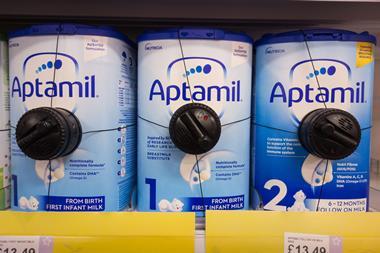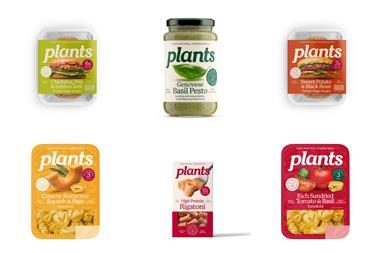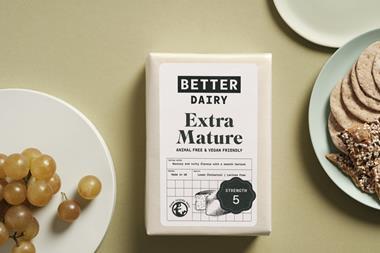Calorie-free stevia is set for regulatory approval in the UK, but there are warnings that it needs “cajoling to shine”, says Guy Montague-Jones
A shortage of sugar drove many British gardeners to grow stevia during World War II.
The plant’s failure to take to our mild climate meant it never hit the big time. But stevia is poised for a major UK comeback in November when the EU regulatory curtain is expected to go up and retailers and manufacturers are lining up to take advantage.
A natural sweetener, with zero calories, Stevia has been hailed as ‘the holy grail of sweeteners’. With the ability to slash sugar levels and keep ‘additive-free’ labels, it could have wide applications within the food and drink industry.
But there are some dissenting voices. Stevia is often regarded as expensive and it has a flavour profile that could leave a bitter taste in the mouths of manufacturers who make the wrong formulation choices.
So what are its chances here in the UK? And who’s best positioned to exploit its potential and overcome the reservations?
The first and biggest initial port of call for stevia in the UK is likely to be table-top sweeteners. In the US, where stevia extract rebaudioside A was approved as a food additive in 2008, the latest Nielsen numbers show the sweetener now has a 23% share of the $685m table-top market. And in France, which approved stevia ahead of the EU late in 2009, the sweetener has injected new life into the sluggish table-top category, sending sales shooting up 22% in a year.
“It’s been like that with other sweeteners and stevia has been no exception in France and the US,” says Angus Flood, president of the World Stevia Association. “That way people get used to the concept and the taste by taking it with their teas or coffees,”
In the UK, Cargill-owned Truvia has already revealed its intention to launch three table-top stevia sweeteners in November: packs of 60 and 120 sachets and a jar containing 170 servings. Merisant-owned PureVia has also announced plans to launch later in the year and Tesco has applied to trademark the name Stevia Sweet.
But that is just the tip of the iceberg. While the likes of PepsiCo, Coca-Cola and Danone remain tightlipped about their UK plans, based on the precedent set in the US and France, some big-brand soft drink and yoghurt launches look almost certain to come soon after, in early 2012. “Big players are likely to lead because they already have the products out there in other markets,” says David Jago, Mintel director of trends and innovation.
Indeed, big-name brands have already experienced some considerable success in other countries. In the US, PepsiCo’s Trop 50, a stevia-sweetened orange juice from Tropicana, raked in $71m in sales in its first year and Coca-Cola’s Vitamin Water Zero now outsells standard Vitamin Water. In France, Coca-Cola relaunched Fanta Still with stevia. It now accounts for 8% of Fanta sales in the country.
Big launches have not been restricted to drinks. In France Danone has added stevia to its Taillefine diet yoghurt and plastered ‘stevia’ across the packaging. Other, smaller launches have been seen across a range of foods. Examples include Cavalier premium dark chocolate in the US and Migros Farmer Croc muesli in Switzerland.
The marketing behind all these products appears to have caught the imagination of consumers. Awareness is at nearly 50% in France and at more than 60% in the US. “Stevia is becoming a destination ingredient something consumers go looking for,” says Jago.
What works around the world
So can we expect the same reaction here? Pundits suggest the UK could become one of its biggest markets. In a Zenith consultancy report last week, it was picked out alongside Germany as an EU country where the appeal is likely to be particularly strong. A strong desire for natural products, combined with a political appetite for sugar reduction, is expected to fuel demand.
Market maturity could also help stevia take off quicker in the UK. “Manufacturers and stevia producers have had time to learn what works around the world,” says James Hecker, marketing director at stevia supplier Pure Circle.
One important lesson is that stevia is not just a means of making sugar-free products. “If there was an early mistake made by manufacturers, it was thinking that stevia had one purpose zero calorie,” says Hecker. Indeed, Jago suggests that using stevia to reduce rather than remove sugar from products could work best in the UK, where consumers can be suspicious of zero calorie. “UK consumers aren’t scared by sugar, only too much sugar,” he explains.
The issue of sugar removal versus sugar reduction touches on one of the biggest potential stumbling blocks for stevia. It leaves a lingering liquorice-like aftertaste that could easily put off consumers if care isn’t taken in formulation.
“Stevia is much more finickity in terms of getting it right than other sweeteners. It needs cajoling to shine,” says Flood. Adding stevia to reduce the sugar content of a product by 50% or even 70% is now achievable but replacing sugar entirely remains problematic.
Many believe flavour problems have limited the market for stevia, making brands reluctant to risk using it in established or new zero-calorie products. A look at the accounts and share price performance of leading stevia suppliers certainly suggests take-up of the sweetener has been lower than expected. In June, high-purity stevia specialist Pure Circle saw its shares tumble to about a third of their value in early summer 2010 after interim results disappointed investors. Sales for the second half of 2010 dropped to $13.6m from $37.5m the year before.
Do these numbers suggest stevia is over-hyped? Not so, says Jeremy Chantry, head of research at Westhouse. “There is slight disappointment that companies have not moved in quicker, but long term, the picture remains positive.”
Chantry thinks the catalyst for stevia to enter the big time may be the global launch of a big carbonated soft drink. But while Flood thinks it is still too early for a really big reformulation story “the supply chain is not ready for a stevia Diet Coke” he insists take-up will accelerate this year as recessionary pressures ease and sugar reduction rises up the priority list of big food and drink brands. And progress is being made to overcome flavour issues. Producers have been working hard with sugar and flavour companies in the past two years to get the chemistry right.
Cost is also falling. It is difficult to estimate the price difference between stevia and rival sweeteners because much depends on the quality and intensity. But expense was identified by the consultancy KnowGenix in 2009 as one of the biggest factors limiting stevia’s potential. As the industry matures, this is changing.
“Stevia extract prices in August 2011 are much more realistic than in 2009 30% less than back then,” says Flood.
Stevia products
- Whole Earth PureVia: the table-top sweetener now has weekly sales in France in excess of 130,000 after launching last February
- Trop 50: with 50% less sugar thanks to stevia, the Tropicana branded orange juice had US sales of $71m in its first year
- Fanta Still: returned to France early in 2010, made with stevia and 30% less sugar. It now accounts for 8% of Fanta sales in the country
- Vitamin Water Zero: the stevia- sweetened water now outsells standard Vitamin Water in the US
- Danone Taillefine Stevia: the first big French yoghurt launch with stevia has the sweetener emblazoned across its packaging













No comments yet